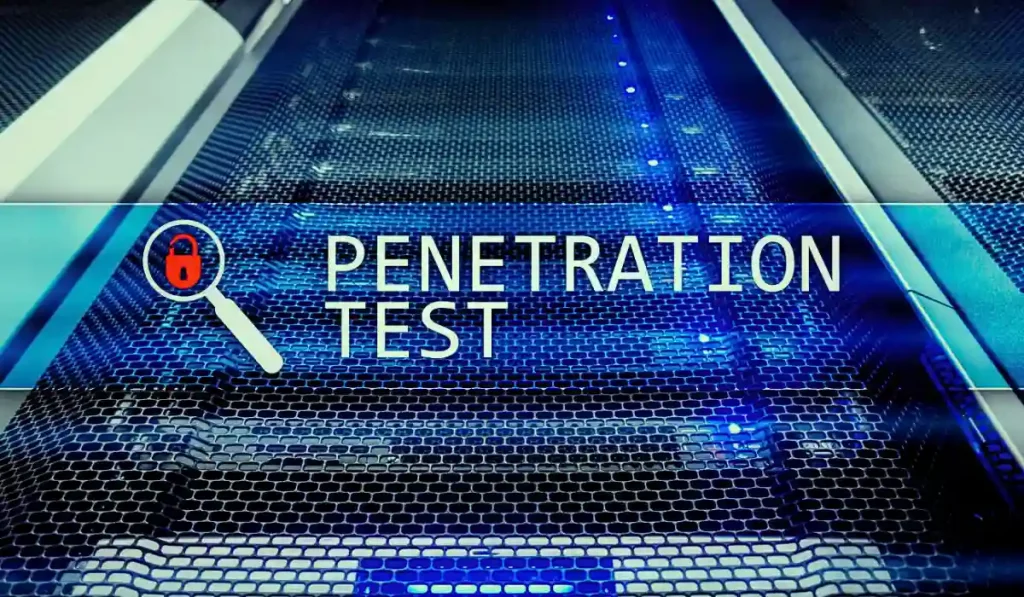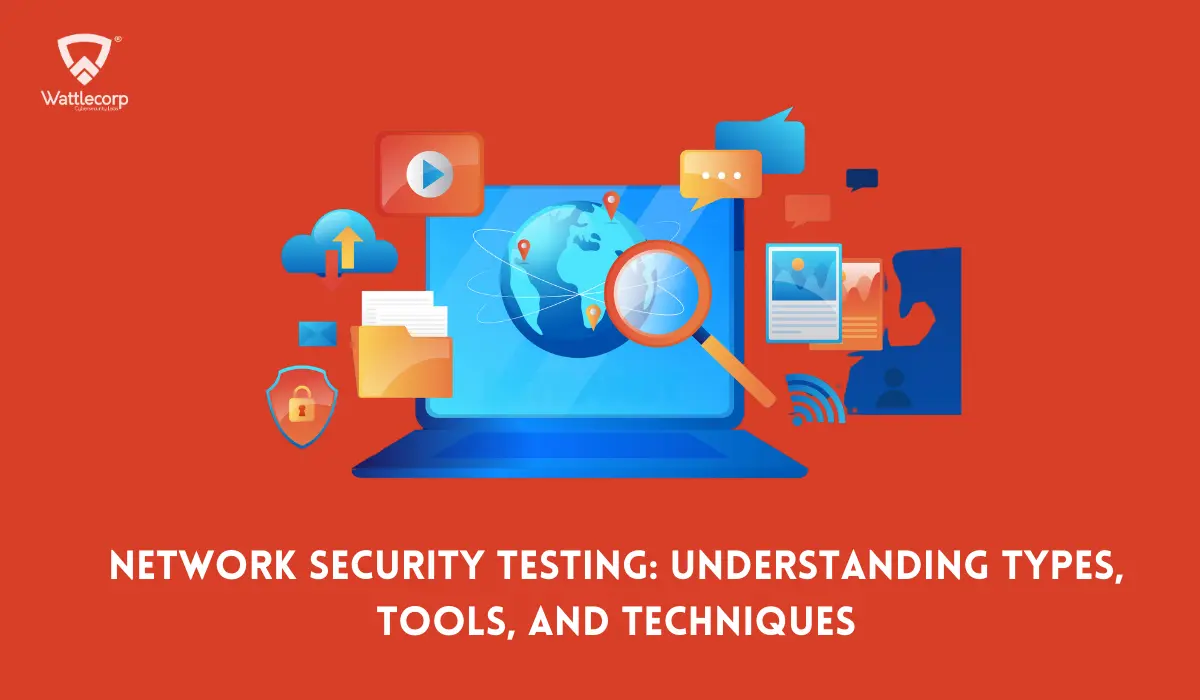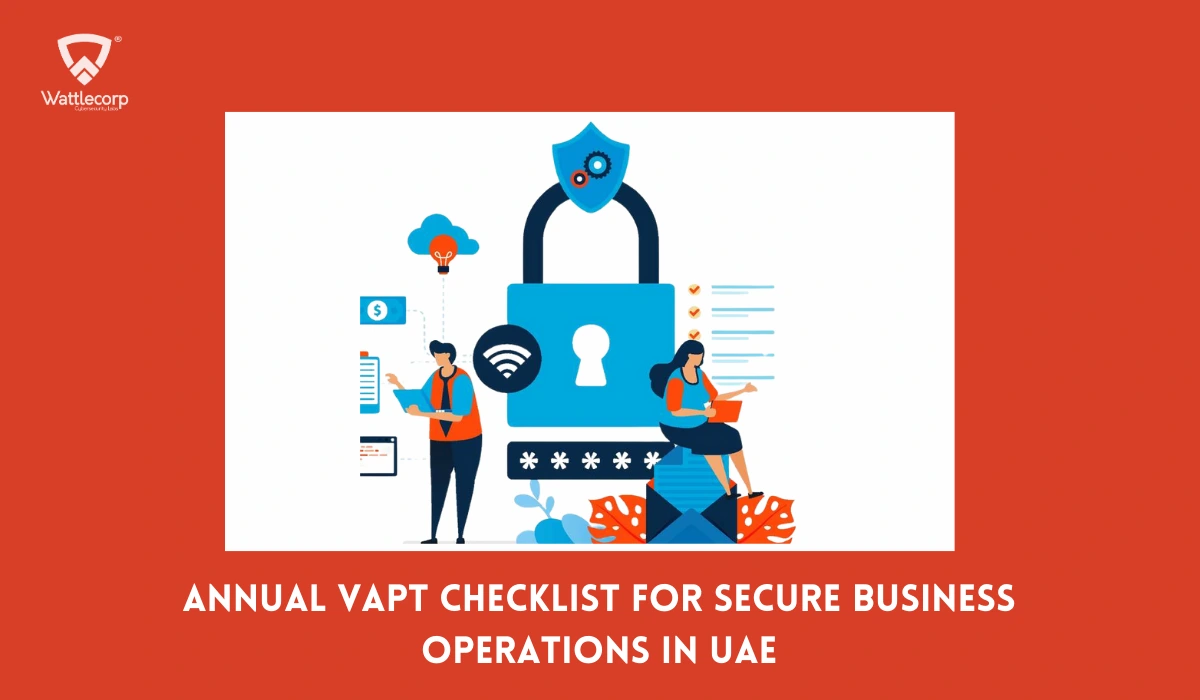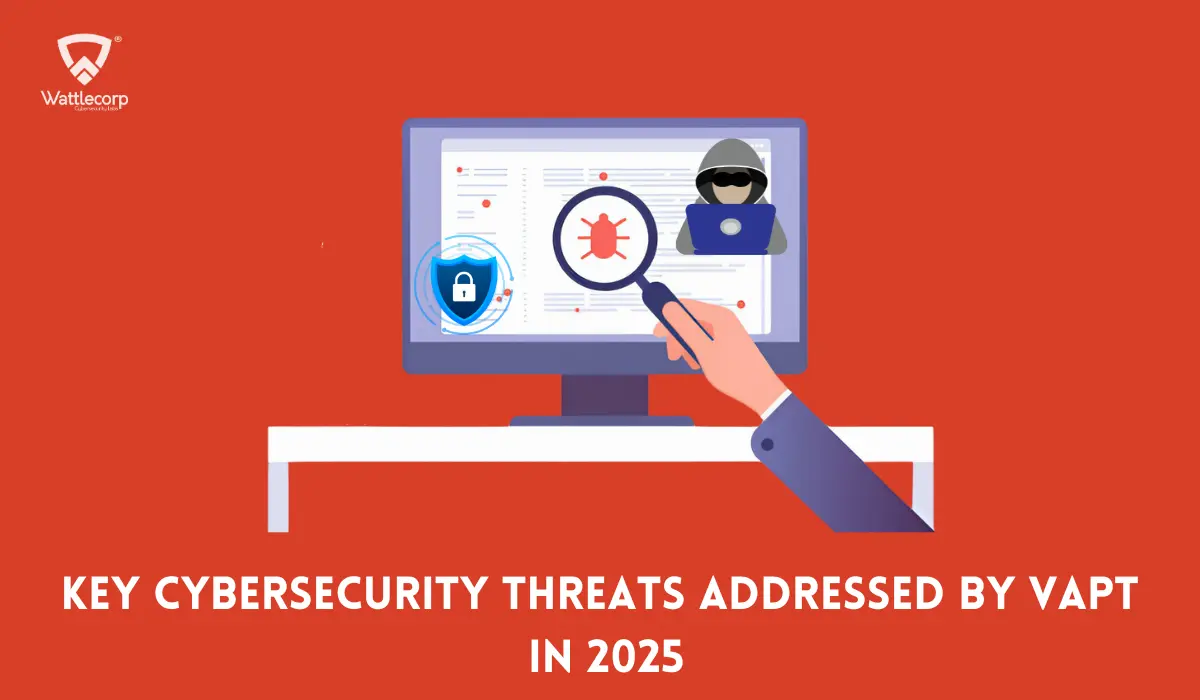SECURE YOUR BUSINESS WITH EXPERT VAPT STRATEGIES
How Secure Is Your Infrastructure? Book a Free Consultation with Wattlecorp’s Experts to identify vulnerabilities, develop a robust VAPT strategy, and safeguard your business with tailored protection solutions.

Today, cybercrimes are floating around the business world, giving rise to ransomware, social engineering, and identity theft. This puts many business owners into depression, with danger lurking in the shadows. This is where penetration testing comes in to put in-line top-class security that fills every gap. With the penetration testing phases, you can put your best effort into delivering a secure stage to the business. These best security practices allow businesses to identify vulnerabilities before they start affecting the business environment.
According to reports, penetration testing has a great place in the market, growing significantly, and is set to generate a valuation of around $4.5 billion by 2025. The numbers show the significance of Penetration testing and its effectiveness in addressing the attacks.
With the right Penetration test methodology and tools in place, you make the most of these figures and put your best hand at eliminating the breach that affects your business.
Keep reading as here we will explore the phases of penetration testing and further about penetration testing.
Table of Contents
ToggleWhat is Penetration Testing?
Penetration testing is the security testing practice that allows businesses to determine the security vulnerabilities in a computer system. Ethical hackers have the job in hand to perform penetration testing to prevent attackers from accessing the system and damaging the business’s reputation.

Several security flaws affect the system, including vulnerabilities, configurations, and faulty business logic.
By performing penetration tests, you can find such flaws and test how well your defenses are working. Penetration testers show how an external attacker can exploit flaws or vulnerabilities.
Why is the Penetration Test Important?
A penetration test provides valuable context and information to CISOs, administrators, and other security experts, allowing them to assess security postures and allocate resources accordingly.
Further, detecting exploits and vulnerabilities helps companies save time and money while protecting their IPs.
A security breach’s average cost is expected to exceed $5 million in 2023, further illustrating the importance of penetration testing and the serious consequences it can have on organizations that neglect it.
Small businesses can be devastated by large security breaches. As a proactive measure, a penetration test lets organizations know what threats they face and how well they are protected.
7 Phases Of Penetration Testing In Cybersecurity
Penetration testing undergoes various phases to provide businesses with a dedicated plan to prevent security vulnerabilities. All these penetration testing phases are well planned with the contribution towards improving the security of the organization.
1. Pre-engagement phase
The organization and the testing team need to communicate clearly before diving into the technical aspects of penetration testing. Test objectives and scope are defined in the pre-engagement phase. Understanding the organization’s goals, identifying critical systems, and setting engagement rules contribute to this process.
These parameters ensure that the testing is in line with the needs of the organization, considering the most important factors.
2. Gathering Intelligence
A cyberattack begins with intelligence gathering and moves on to reconnaissance. Testing companies collect data about target organizations, such as their network infrastructure, domain names, and IP addresses.
It helps testers figure out what the organization’s digital footprint is, what systems are related, and where possible vulnerabilities are.
3. Threat Modelling
After the penetration testers get their hands on the intelligence, it’s time to move to the next equally important threat modeling phase. This includes identifying the data collected to identify the attacks that can deeply impact the business.

When testers think as per the mindset of the attackers, they will be better able to put a stop to attackers’ actions towards breaching the organization’s security.
The perfect way to keep up with vulnerabilities is by determining their potential impact and exploitability.
4.Analyzing Vulnerabilities
During vulnerability analysis, the target systems are actively analyzed for potential vulnerabilities. Manual testing can be combined with automated testing tools. A vulnerability scanner automates scanning for known vulnerabilities, whereas a manual test allows testers to examine more complex attack scenarios that an automated scanner may normally miss. Understanding Common Web App Security Risks and How to Mitigate Them is essential for ensuring the effectiveness of this phase.
5.Exploitation
After testers can finally identify the security vulnerabilities, it is not done yet; there is more to it with moving towards the exploitation phase. This is where testers exploit vulnerabilities to gain unauthorized access to a computer system. It mainly involves validating vulnerabilities and their potential impact is assessed.
The primary motive behind penetration testing is ensuring businesses operate in a safe and secure environment and are not impacted in any way possible.
6. Post-exploitation
Now you are almost done with the Cybersecurity testing phases, it’s time to check through the post-exploitation phase after successful access has been gained to the target system. During this step, they determine how much control they have over the compromised systems. During a test, a tester may attempt to escalate privileges, move around within the network, and access sensitive data. Data theft and unauthorized access are potential effects of a successful cyberattack.
7. Reporting phase
The final penetration testing phase is the reporting phase which brings together the insights gained during the Penetration Testing process. Reports are produced detailing the test findings, including vulnerability discoveries, potential impacts, and mitigation recommendations.
IT and security teams will find detailed information in the report that will aid them in addressing the issues, and senior management will gain a more detailed understanding.
Also Read : Most Common Penetration Testing Vulnerabilities Found In 2024
How is Penetration Testing transforming security?
Penetration testing benefits businesses in minimizing the impact of online attacks. This type of security practice allows businesses to conduct an unbiased assessment of their security posture from a third party.

It might take time and be expensive, but a pen test can save money. Here is how penetration testing can shape business security:
Recognize and classify threats
Performing periodic web application penetration tests can assist the organization in detecting and prioritizing any threats to its web applications and internal and external networks.
Organizations benefit from prioritizing these threats when they can predict threats and prevent malicious attacks from occurring.
Furthermore, it helps to identify what security controls are needed to ensure the assets and people of the organization are secure.
Stop adversaries from penetrating infrastructure
Penetration test falls head to head, similar to the real-life hacking carried out by a real-life hacker. By undertaking monthly or regular penetration testing, you can take an advanced approach to accessing and hardening IT infrastructure security.
This method reveals security vulnerabilities in your security, giving you the opportunity to correct them before an adversary takes action.
Prevents costly data breaches
Data breaches can push businesses backward, giving them financial and reputational terms. The cost of legal action, IT security compliance, customer safety, and loss of trust can exceed millions of dollars for businesses.
The penetration testing market will reach $2.7 billion by 2027. Having regularly planned penetration tests is a great way to stay on top of your security, protect your brand and reputation, and control or prevent monetary losses.
Top Penetration Testing Tools In 2024
Penetration testing is performed with a more lethal approach with a list of penetration testing tools available. Get hands-on tools, and you can raise the security standard and eliminate attacks.
Here is the list of popular penetration testing tools that work at improving security:
1. METASPLOIT
The Metasploit framework is one of the most popular security assessment tools. Metasploit allows testing teams to carry out security assessments and beat white hat hackers. With Metasploit, you can use either the GUI or the command line.
Penetration testing is performed with a more lethal approach with a list of penetration testing tools available. Get hands-on tools, and you can raise the standard of security and eliminate attacks. Here is the list of popular penetration testing tools that work at improving security:
2. NMAP
Nmap is a free tool for assessing and investigating network security. This tool supports Windows, Linux, Solaris, HP-UX, BSD, Mac OS, and AmigaOS variants. The program has both a CLI and a GUI interface. Nmap can help penetration testers identify which hosts are accessible, which services are exposed, and what types of firewalls and tunnels they have installed.
3. BURP SUITE
Burp Suite by Portswigger provides tools for testing application security. One of the most popular web proxy tools in the suite is Burp Proxy. Burp Proxy enables penetration testers to carry out man-in-the-middle attacks (MitMs) between a web server and a browser. By inspecting network traffic, they can help identify and exploit web application vulnerabilities.
4. OWASP ZAP
OWASP Zed Attack Proxy (ZAP) scans Java-based web applications. Its automated scanners detect SQL injection and cross-site scripting vulnerabilities.
OWASP ZAP also allows you to script attacks, intercept and modify traffic, and generate reports. Thus, penetration testing can be customized and comprehensive.
It has an active community that helps users when they encounter problems. It is also suitable for developers who need to connect to a database and allow users to enter data.
5.HYDRA
Hydra tool guesses usernames and passwords with a command line. It cracks passwords for online applications, so it’s good for website penetration testing. Using its many heads, Hydra cracks passwords for many services.
Also Read : Top Penetration Testing Methodologies to Protect Your Business
6. WIRESHARK
Wireshark is a network traffic monitoring solution for capturing and analyzing network traffic. Some penetration testers are capable of automatically logging data from several different networks, including Ethernet, token ring, loopback, and asynchronous transfer mode (ATM). Using a graphical user interface (GUI), network engineers can analyze live network traffic data.
Hackers are getting smarter and smarter which puts a serious risk to your business infrastructure. That is why it is essential to have a team of dedicated cybersecurity professionals capable of implementing penetration testing to prevent security vulnerabilities. By following these phases of penetration testing and With a regular penetration testing program in India, you can avoid malicious attacks in the future.
Frequently Asked Questions (FAQ)
Penetration testing means discovering and exploiting vulnerabilities in the systems. This helps penetration testers to identify possible weak points and take the possible measures to strengthen the security.
Ethical hackers conduct pen testing. They utilize hacking techniques to identify possible points of entry into companies’ infrastructures.
Penetration testing is divided into five categories which include blind tests, targeted tests, external tests, internal tests, and double-blind tests. With every test, hackers have varying levels of access to an organization’s systems and applications.
Pen testers are security experts who allow businesses to identify and eliminate security vulnerabilities in the IT infrastructure.







